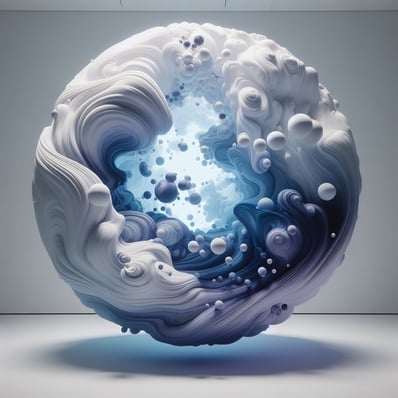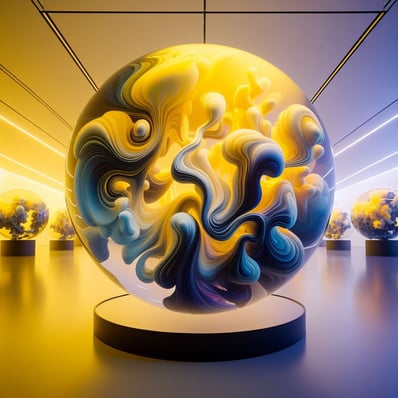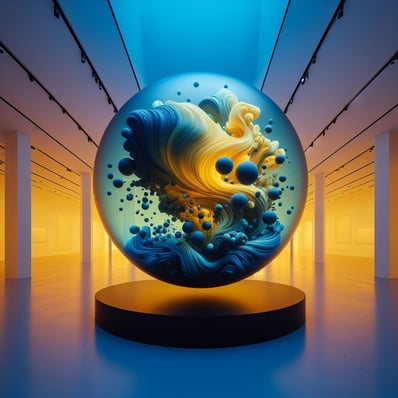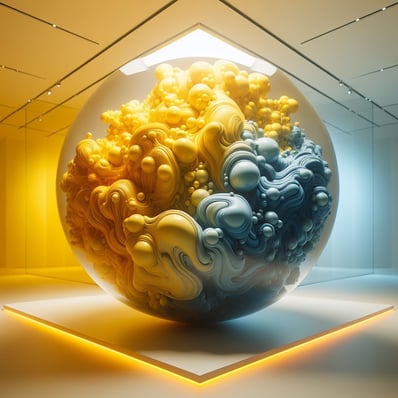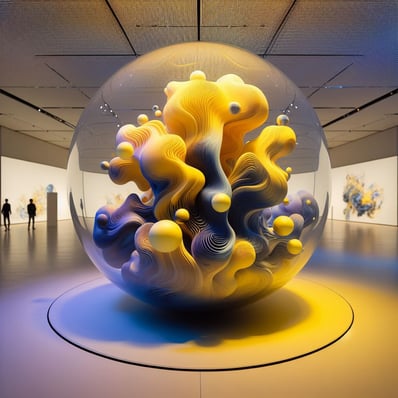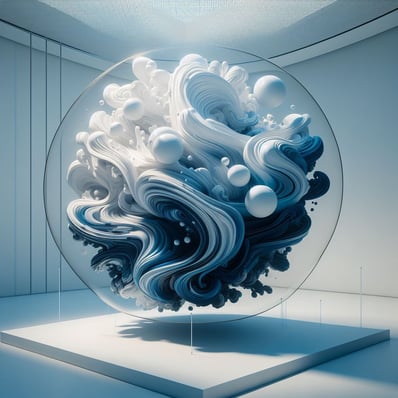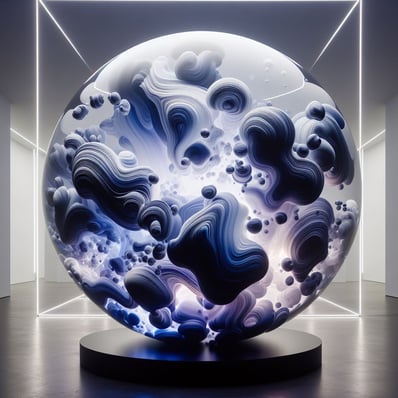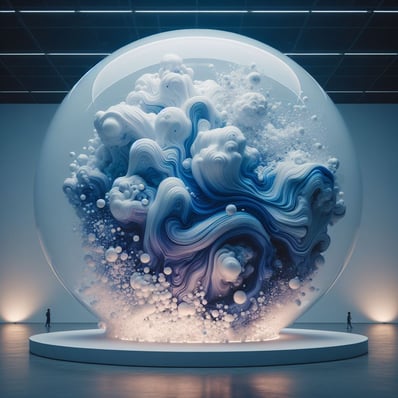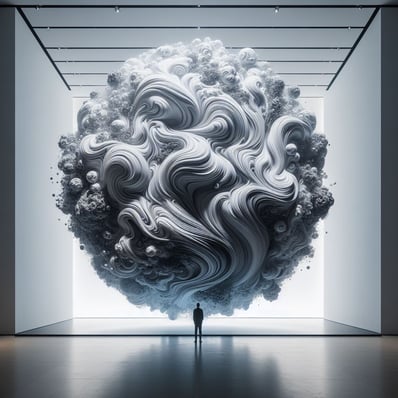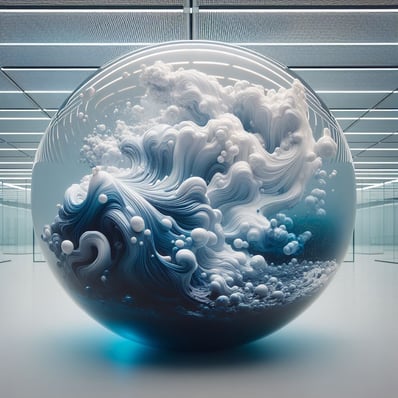AI Art
A New Frontier or a False Pretense?
Walid Ghali
12/26/20235 min read
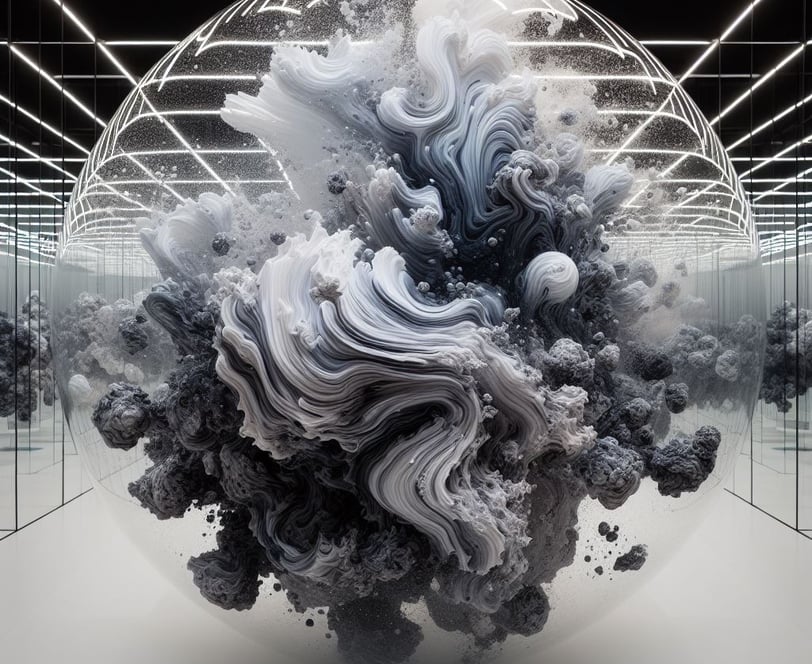

Artificial intelligence (AI) has been making waves in various fields and domains, including art. AI can generate images that are realistic, abstract, or surreal, based on data, algorithms, or human input. Some people have praised AI art as a new and innovative form of artistic expression, while others have criticized it as a lack of creativity and originality. The question of whether individuals who use AI to generate images should be called “artists” is a contentious and controversial one, with no clear or definitive answer. In this post, we will explore some of the arguments and counterarguments on this topic, and try to shed some light on the nature and future of AI art.
What is AI Art?
AI art is a term that refers to any form of art that is created or influenced by AI. AI art can take various forms, such as:
Generative art: AI art that is created by AI algorithms without human intervention. For example, AI can generate images that are based on random or predefined parameters, such as shapes, colors, patterns, or styles.
Interactive art: AI art that is created by AI algorithms in response to human input. For example, AI can generate images that are based on human preferences, feedback, or emotions.
Collaborative art: AI art that is created by AI algorithms in collaboration with human artists. For example, AI can generate images that are based on human sketches, suggestions, or edits.
AI art can also be classified based on the source of data or inspiration, such as:
Data-driven art: AI art that is created by AI algorithms based on data, such as text, images, audio, or video. For example, AI can generate images that are based on text descriptions, captions, or stories.
Algorithmic art: AI art that is created by AI algorithms based on mathematical or logical rules, such as fractals, cellular automata, or neural networks. For example, AI can generate images that are based on complex or chaotic algorithms that produce unpredictable or emergent patterns.
Conceptual art: AI art that is created by AI algorithms based on abstract or symbolic concepts, such as emotions, meanings, or values. For example, AI can generate images that are based on human sentiments, intentions, or goals.
AI art can also be influenced by various artistic genres, movements, or styles, such as:
Realism: AI art that is created by AI algorithms that aim to produce images that are faithful to reality, such as portraits, landscapes, or still lifes.
Abstraction: AI art that is created by AI algorithms that aim to produce images that are simplified, distorted, or exaggerated, such as geometric shapes, color fields, or optical illusions.
Surrealism: AI art that is created by AI algorithms that aim to produce images that are bizarre, fantastical, or dreamlike, such as animals, objects, or scenes that defy logic or reason.
AI art can also be evaluated based on various criteria, such as:
Quality: AI art that is created by AI algorithms that produce images that are aesthetically pleasing, technically proficient, or visually appealing.
Originality: AI art that is created by AI algorithms that produce images that are novel, unique, or groundbreaking.
Meaning: AI art that is created by AI algorithms that produce images that are expressive, communicative, or insightful.
Why is AI Art Controversial?
AI art is controversial because it challenges some of the traditional notions and assumptions about art and creativity. Some of the questions and debates that arise from AI art are:
Who is the artist?: AI art raises the question of authorship and ownership. Who is the creator of AI art? Is it the AI algorithm, the human who designed or trained the AI algorithm, the human who used or interacted with the AI algorithm, or some combination of them? Who has the rights to AI art? Who should get the credit or recognition for AI art?
What is creativity?: AI art raises the question of creativity and originality. What is the source of creativity in AI art? Is it the AI algorithm, the human who influenced the AI algorithm, the data or algorithm that inspired the AI algorithm, or some combination of them? What is the degree of creativity in AI art? Is it comparable, superior, or inferior to human creativity?
What is art?: AI art raises the question of definition and evaluation. What is the essence of art in AI art? Is it the process, the product, or the perception of AI art? What are the criteria for art in AI art? Is it the quality, the originality, or the meaning of AI art?
What are the Arguments for and against AI Art?
AI art has been met with both praise and criticism from various perspectives and viewpoints. Some of the arguments for and against AI art are:
Arguments for AI Art
AI art is innovative: AI art can create new and unprecedented forms of art that would be impossible or difficult for humans to create. AI art can generate images that are based on complex or dynamic algorithms, that are constantly changing or evolving, or that are influenced by various sources of data or inspiration. AI art can expand the boundaries and possibilities of art, and challenge our understanding and appreciation of art.
AI art is democratic: AI art can make art more accessible and inclusive for everyone. Anyone with an internet connection can create or enjoy AI art, regardless of their artistic skills or training. AI art can lower the barriers and costs of entry for art, and empower more people to express themselves or explore their creativity through art.
AI art is educational: AI art can help us to learn more about ourselves and the world around us. By creating art that is based on data or algorithms, AI art can help us to visualize and understand complex or abstract concepts, such as science, mathematics, or philosophy. By creating art that is based on human input or feedback, AI art can help us to reflect and discover more about our preferences, emotions, or values.
Arguments against AI Art
AI art is not creative: AI art is not the result of human creativity, but rather the output of algorithms processing data. AI art does not involve any human intention, imagination, or expression. AI art is merely a mechanical or computational process, not a creative or artistic one.
AI art is not original: AI art is often derivative or imitative of existing art forms. AI art does not produce anything new or groundbreaking, but rather copies or remixes what has already been done before. AI art is not truly innovative or unique, but rather repetitive or predictable.
AI art is not meaningful: AI art does not have the same depth or significance as human art. AI art does not convey any emotional, intellectual, or social message or value. AI art is often superficial or meaningless, and does not elicit any emotional or cognitive response from the viewers or audiences.
AI art is a fascinating and controversial topic that has sparked many debates and discussions within the artistic community and beyond. Whether individuals who use AI to generate images should be called “artists” is a matter of opinion and perspective, and there is no definitive or objective answer. However, the debate about AI art is important and valuable, as it raises important questions and issues about the nature and future of art and creativity in the age of AI.
